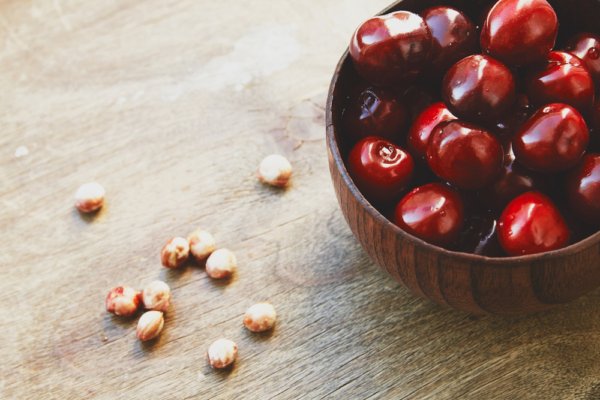As the New Year holiday approaches, the prices and quality of cherries, a “festive star” in the Chinese fruit market, have attracted widespread attention from consumers. With a large shipment of cherries arriving by sea, cherry prices have been slashed in half. The latest reports indicate that in some regions, cherry prices have dropped to around 15 yuan per jin (a Chinese unit of weight). This topic has also become a hot search trend.
In early November, cherries that were just released by air transportation were fetching prices as high as one hundred yuan per jin, leaving many people astonished by the prices.
At the beginning of December, as sea-transported cherries continued to arrive at the port, the once firm cherry prices began to loosen, with a faster decline in prices.
In recent days, news of the “sharp drop in cherry prices” has been spreading wildly on various platforms. Some netizens have reported that cherry prices in some areas have dropped to 15 yuan per jin. Some netizens exclaimed, “Bought too early, lost big.”
On December 29th, a report from Hangzhou stated that a wholesaler of cherries at the Gouzhuang Fruit Market in Hangzhou mentioned that the cherries this week were indeed much cheaper compared to the previous week. “Two days ago, a box (5kg) of 2J grade cherries was priced at around 410 yuan, now it’s 370 yuan (5kg).” The price drop for the 3J grade is even more significant, as it was over 600 yuan a box (5kg) last week, but has now dropped to around 470 yuan (5kg), and the wholesale price can be cheaper by another twenty yuan compared to the retail price. However, compared to the beginning of last month, the current price is indeed significantly lower.
In the grading system of cherries, especially those from the Southern Hemisphere such as Chile, the diameter size of cherries is often represented by the letter “J.” The more “J’s” there are, the larger the cherry size. 1J typically indicates a cherry diameter between 26-28 millimeters. 2J indicates a diameter between 28-30 millimeters. 3J indicates a diameter between 30-32 millimeters. 4J indicates a diameter greater than 32 millimeters.
At an online supermarket in Hangzhou, the price of current stock 2J grade cherries is discounted to 231 yuan (2.5kg), while the pre-sale price for the same grade of cherries for New Year’s Day is only 159 yuan (2.5kg), which is thirty percent cheaper.
Yellow cherries, known for their fresh sweetness and attractive appearance, are relatively more expensive compared to black cherries. These days, a large quantity of “yellow cherries” has also arrived in the domestic market, bringing an increase in good-quality products. It’s understood that last week, a box of 2J “yellow cherries” was priced at around 1350 yuan (8.8kg), while the recently arrived 3J “yellow cherries” are priced at only 1150 yuan per box, showing a more noticeable price drop.
“The price has dropped quite a bit, and more people are purchasing.” A fruit merchant mentioned that recently, there has been a significant fluctuation in cherry prices, with prices changing almost daily. However, consumers should not only focus on prices, as cherry grades, freshness, brands, and varieties all affect the price.
For example, the mainstream variety in the market, the Santina cherry, wholesalers at around 300 yuan per box (10kg), averaging at about 30 yuan per jin. However, another variety, the Pacific Red, which has a sweeter taste, is priced at 36 yuan per jin. The “yellow cherries” are even more expensive, with the common Rainier variety reaching as high as 650 yuan per box (8.8kg), making it twice as expensive as the Santina variety. The most expensive is the Scarlet Royal Black Swan golden cherry, known as the “sweetest on earth,” with a price exceeding a thousand yuan for a box of 2J grade (4kg).
“In recent days, sales have increased compared to the previous period. We can sell over 1300 boxes of black cherries and over 500 boxes of yellow cherries daily,” introduced a staff member from Nan Yang Fruits.
It is noted that the eve of New Year’s Day is the peak period for the listing of sea-transported cherries, with prices expected to be even cheaper.
According to previous reports from the media, this year’s Chilean cherries are in a year of plenty, with the overall production estimated to increase by 40-50% compared to last year. More importantly, the quality this year is said to be even better than the previous year.
The Chilean Fruit Exporters Association had previously forecasted that the 2024/25 season for Chilean cherries would see a record production, with export volume expected to increase by fifty percent compared to the previous season, reaching approximately 1.245 billion boxes (each box weighing 5 kilograms), with a total global export quantity of about 620,000 tons.
It is expected that after January 2nd, cherry prices will drop again, and the lowest prices of next year are predicted to occur after the traditional Chinese New Year, with prices potentially falling to the lowest point in recent years.
According to several fruit business operators, although the yield of small-sized cherries is high, the yield of large-sized cherries has actually decreased compared to last year. Currently, there is a scarcity of 4J grade produce in the market, with the most being single J and 2J grade cherries. “Good quality goods are not cheap, and the ‘price-slashed’ cherries are generally medium to small-sized produce.”

